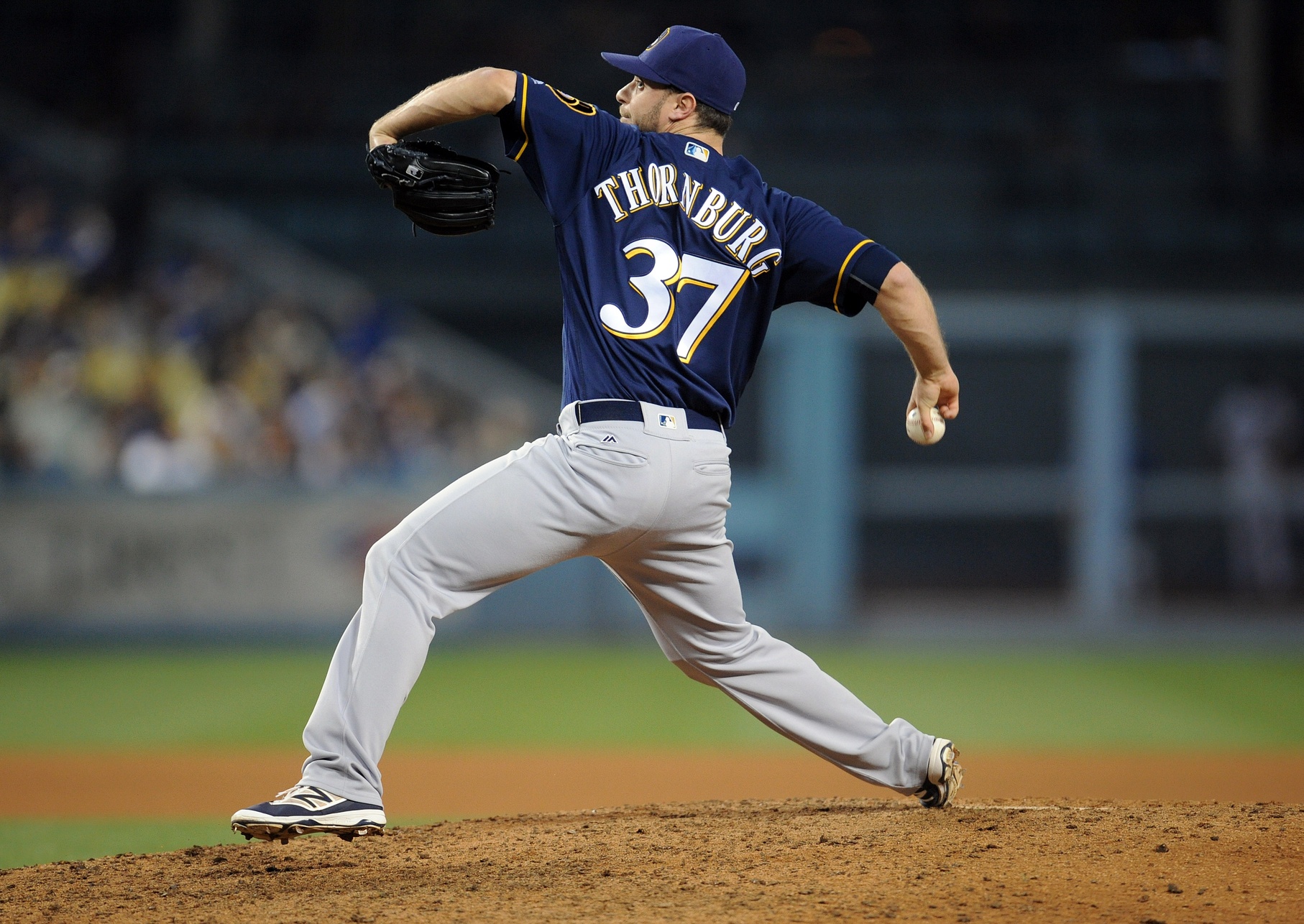Jeremy Jeffress and Will Smith were closely linked at the back end of the Brewers’ bullpen once Francisco Rodriguez [was traded] after last season. They were tapped to enter the season as co-closers, they were used as a tandem to lock down the end of games once Smith returned from his knee injury, and they posed for incredible photosets. And, fortunately for the club’s farm system and future prospects, but unfortunately for fans of parodies of mid-90s television shows, each was traded to a contender at this year’s trade deadline.
With both of the club’s late-inning options gone, though, the Brewers had to turn to another pitcher to get outs at the end of the game. The obvious choice was Tyler Thornburg, who was one of the only other successful veteran pitchers in the bullpen at that time, and that is exactly the direction that manager Craig Counsell decided to go.
In the month-plus since the deadline, Thornburg has been the go-to in save situations. Over the past 30 days, he has gotten six of the ten Brewers’ save opportunities, and he has converted five of those six. Saves are obviously not the be-all, end-all of reliever performance metrics (nor are they a particularly effective way of measuring performance at all), but Thornburg has been undeniably excellent since taking over for Jeffress and Smith.
His numbers from the full season are impressive to begin with. After never posting a DRA lower than the 4.87 he put up during his rookie year, he has managed a 2.83 DRA and 2.66 FIP thus far in 2016. This performance uptick has been possible because of a tremendous increase in his strikeout rate; Thornburg’s career K/9 mark is 8.8, but this year he has bumped that all the way up to 11.8. Additionally, he has paired this with an ability to maintain the control improvements he exhibited last year, as his BB/9 rate has stabilized over the past two years right at 3.0.
And perhaps most impressively, since Jeffress and Smith were traded and Thornburg was handed the keys to the bullpen, he has not allowed an earned run. In 17.7 innings, he has allowed just two hits and one unearned run, while striking out twenty and walking only six. Clearly, being moved to higher-leverage situations has not impacted his performance.
This run of excellence does raise the question of what comes next for the right-hander, though. Thornburg is young but not absurdly so—he will turn 28 in a couple weeks—and he is about to be arbitration eligible. His arbitration costs should be low right now because he only has nine career saves, but his price will go way up after next season if he is given the opportunity to consistently pitch the ninth inning. There is also no guarantee that this improvement will stick, as he was a generally mediocre pitcher until this season.
For these reasons, I expect that he will be the next Brewers relief pitcher to be traded. I imagine that the front office will try to move him during the winter—especially if they can include him as a sweetener in a larger deal, where he would likely be more valuable than as a piece in a straight one-for-one deal—but he may in fact be held until next July. The in-season trade market for relief pitchers was a bit out of control, but it is difficult to imagine that teams will be willing to trade top-100 prospects for good but not elite relief pitchers during December. At the end of July, front offices can look at their injury-riddled or underperforming bullpens and get desperate, but it’s much harder to take advantage of good teams during cold, harsh light of the offseason.
It would therefore make sense for the Brewers to hang on to Thornburg through next season’s trade deadline, although that will expose them to some risk that he starts next season slowly and torpedoes any value he has. However, as an arb-eligible reliever with a short track record of success, it is unlikely he has a ton of value on his own right now anyway, so the Brewers would be best served by waiting until next season.
The short life span of relievers necessitates this kind of movement. The club certainly expects to compete in the next few years, but Thornburg will be a free agent by 2020 and may not even be good by that point. The team has been successful at churning out productive relievers (see Smith and Jeffress, for example), so they should not feel tied to their current success stories. There is therefore no reason to hold onto Thornburg unless he is anchoring the bullpen of a surprisingly competitive team next year.
*This article has been updated to reflect Francisco Rodriguez’s end of 2015 transaction.

Krod was traded.
Thank you, good catch. Article updated and noted.